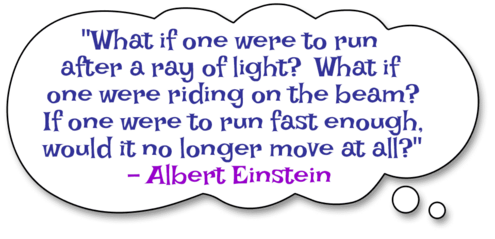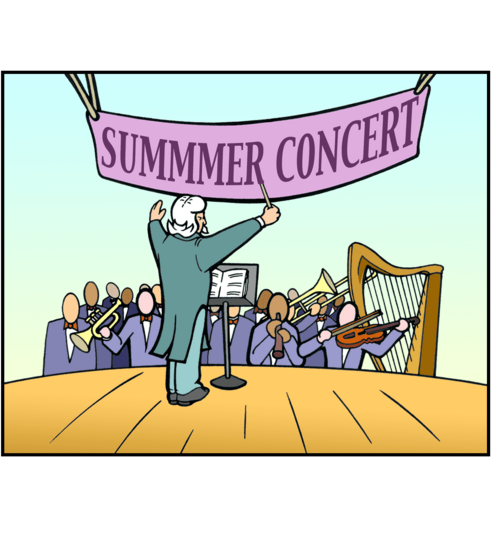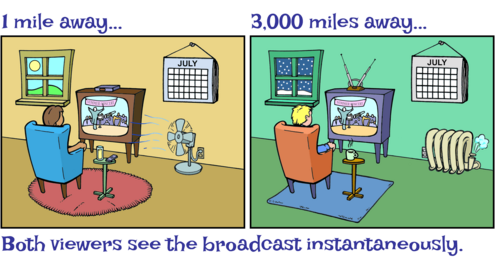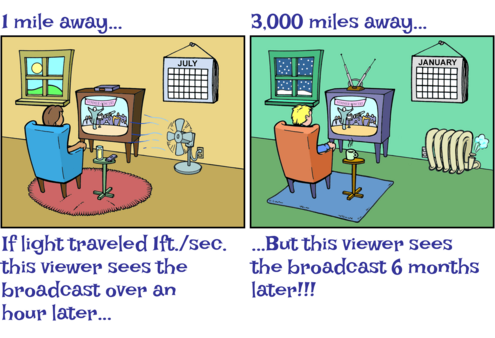Light Speed

Light is fast! It can reach the universal speed limit — 186,000 miles per second. (If you could travel as fast as light, the universe would look very different.) Because it moves so quickly, light can seem to appear instantaneously. Think about when you turn on a TV... images pop up right away.
How does the speed of light affect our lives and what we know about the universe? To shed some light on the subject, power up this thought experiment:
Question: What if light could only travel 1 foot/second?
Example: Imagine you are watching a live concert broadcast on TV.

Example: Imagine you are watching a live concert broadcast on TV.


Logic: When light travels at its normal speed of 186,000 miles/second, you see the broadcast immediately. You could be 1 mile or 3,000 miles away from the concert — it doesn't matter! Why? Light can travel distances very rapidly. If you changed how fast light could travel, then you would change the amount of time it would take for it to reach your eyes.
Prediction: If light could only travel 1 foot/second, the broadcast would reach viewers at different times, depending on their distance from the concert. Somebody sitting 1 mile away would receive the broadcast with a delay of over an hour. Somebody 3,000 miles away would receive the broadcast about 6 months later. Not exactly live TV!

Conclusion: The farther away you are from a source of light, the longer it takes the light to reach you.
Did You Know? Distances on Earth are relatively short, which is why live TV can be seen anywhere on Earth at almost exactly the same time. But distances in the universe are SO great that by the time light from an object in space, like a star, reaches our eyes, what we are seeing is a snapshot of how it looked hundreds or even millions of years ago!
Image Credits:
Photos: satellite: courtesy of NASA; Illustrations: Newton's Ball: and Light Speed: Eric Hamilton




 Biodiversity
Biodiversity
 Brain
Brain
 Genetics
Genetics
 Marine BiOLogy
Marine BiOLogy
 MicrobiOLogy
MicrobiOLogy
 PaleontOLogy
PaleontOLogy
 ZoOLogy
ZoOLogy
 AnthropOLogy
AnthropOLogy
 ArchaeOLogy
ArchaeOLogy
 Astronomy
Astronomy
 Climate Change
Climate Change
 Earth
Earth
 Physics
Physics
 Water
Water
